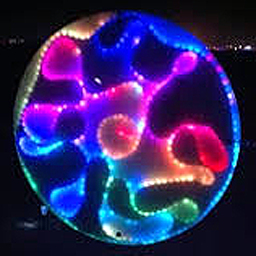12TwinkleFoxRef twinkleFox = TwinkleFoxRef::New(NUM_LEDS);
21 twinkleFox->lazyInit();
26 twinkleFox->chooseNextColorPalette(twinkleFox->targetPalette);
CFastLED FastLED
Global LED strip management instance.
central include file for FastLED, defines the CFastLED class/object
void show(uint8_t scale)
Update all our controllers with the current led colors, using the passed in brightness.
void setMaxPowerInVoltsAndMilliamps(uint8_t volts, uint32_t milliamps)
Set the maximum power to be used, given in volts and milliamps.
static CLEDController & addLeds(CLEDController *pLed, struct CRGB *data, int nLedsOrOffset, int nLedsIfOffset=0)
Add a CLEDController instance to the world.
A version of CPixelView<CRGB> with an included array of CRGB LEDs.
@ TypicalLEDStrip
Typical values for SMD5050 LEDs.
#define EVERY_N_SECONDS(N)
Checks whether to execute a block of code every N seconds.
Twinkling "holiday" lights that fade in and out.

